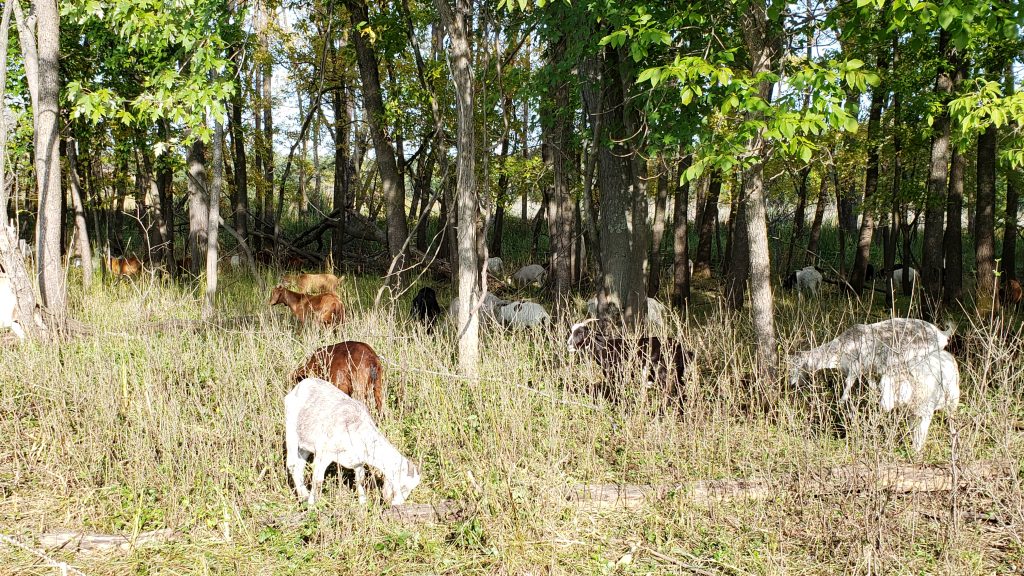Goats Aid in Invasive Species Removal
A three-year partnership forged between the NWTF, Stearns County, Minnesota Department of Natural Resources, and Great River Greening is taking a page from what has been learned from wild grazers over the years and applying it in Quarry Park to enhance wildlife habitat and overall ecological health.
Over time, grazing animals have played an essential role in grassland and prairie ecosystems. A study noted that both vegetation density and diversity seemingly declined when the American bison was extirpated from parts of its historic grazing lands. Likewise, the National Park Service states that deer and cattle, for instance, stimulate plant growth and trigger biological activity and nutrient exchange. In essence, grazing disturbance promotes a more diverse ecosystem and keeps would-be invasive species at bay.
A three-year partnership forged between the NWTF, Stearns County, Minnesota Department of Natural Resources, and Great River Greening is taking a page from what has been learned from wild grazers over the years and applying it in Quarry Park to enhance wildlife habitat and overall ecological health.
The 683-acre Quarry Park outside of Minneapolis is the largest in Stearns County’s park system and features scenic woodlands, open prairie, wetlands and unquarried bedrock. Trees include aspen, oaks and other habitat-rich species; however, invasive, nonnative buckthorn has taken over significant portions of the park.
Through the three-year partnership, goats are being introduced to 90 targeted acres in the park’s woodlands, wetlands and rock outcrops, primarily focusing on eliminating the invasive buckthorn.
“Goats prefer buckthorn leaves over most everything else, such as the native low-stature jack-in-the-pulpit and lady fern, which is already making a strong comeback, which makes goat browsing a really good tool and reduces the need for herbicide spraying," said Wiley Buck, Great River Greening senior program manager. "Goat browsing has some unique benefits and opportunities like ‘under hoof seeding,’ where we spread native forest grass seed in the goat paddocks before they arrive, and then the goats work the seed into the ground. This closely mimics how native seed got soil contact with our historic elk and bison, so it’s a very natural seeding process. Plus, goat watching is very popular at other parks in central Minnesota.”

In addition to using goats to browse invasive species and indirectly help plant native grass seed, managers are also spraying and using mechanical removal practices.
Volunteers for the project are releasing the oaks and other species from the buckthorn plague and returning the habitat to a mosaic high in ecological value.
“Goats are a great alternative to herbicide treatments when dealing with dense invasive species like buckthorn,” said Clayton Lenk, NWTF district biologist for Minnesota, North Dakota, South Dakota and Wisconsin. “This is a unique project where we are enhancing forest health by utilizing livestock as a primary tool. We are proud to support this innovative effort.”
The goats will be in a fenced area and monitored by the Goat Watcher Volunteer Group. If you live in the Stearns County area and want to become a “Goat Watcher” or have any questions, please get in touch with goatdispatchinfo@gmail.com.
CONNECT WITH US
National Wild Turkey Federation
770 Augusta Road, Edgefield, SC 29824
(800) 843-6983
National Wild Turkey Federation. All rights reserved.
